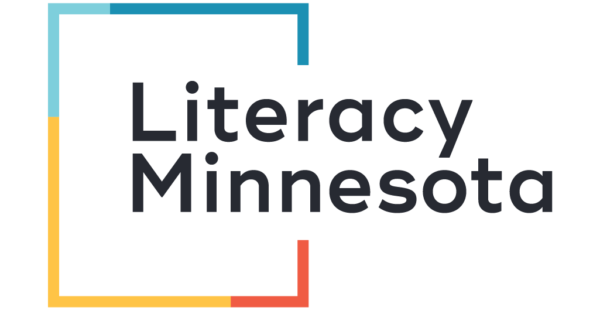- MN ABE Connect
- Archive
- HyFlex in Minnesota ABE: What Is It, Who Needs It, and How Does It Work? – Part 2
 March 7, 2022
March 7, 2022
HyFlex in Minnesota ABE: What Is It, Who Needs It, and How Does It Work? – Part 2
Tom Cytron-Hysom, DL ConsultantIn Part 1 of this article, I introduced the topic of HyFlex in Minnesota Adult Education. Part 2 continues below with my discussions with two additional Minnesota teachers who have creatively adapted HyFlex in response to local needs.
Rallou Rice – Elk River, Metro North Consortium
Rallou Rice started using HyFlex in Elk River in September. “The reason we started to use a HyFlex model is because I work in a satellite area – two evenings a week I had a well-established online class we had developed in response to COVID requirements. I didn’t want to lose the online students. I wanted to combine the students; that way I can teach the online and the in-person students at the same time.”
The technology she uses is fairly basic, she explained:
“I don’t have high tech resources. I use my Chromebook, a projector, and speakers. I learned that I could do that! I’m a pen and pencil person, and now I’m doing all kinds of different things – I can do this!”
“In class, I don’t move a whole lot; everyone can hear each other. I use the Chromebook and I project the information on the screen. The online students use their devices to connect to the class.” She uses Google Meets as the platform for the class, and believes the technology works well.
She was surprised that the in-person students didn’t mind having the online students present, and that participation did not drop. Her only regret is that the delivery model has led to more of a teacher-led than a student-led class.
One final point Rollout makes is that HyFlex was used in colleges and universities even before COVID: “They did a lot of HyFlex, and I think ABE is a gateway to that; it’s a good thing to prepare students.
Christine Dreiling – Hubbs Center, St. Paul Community Literacy Consortium
Christine Dreiling said her experience began “last school year, when I was really frustrated with being an online teacher. I wanted to combine online and in-person.” She began a pilot last spring, and it worked out well.
 “Now, there are four teachers at Hubbs Center using HyFlex. We each do this a little differently; I didn’t realize there was room for this flexibility. The way I do it is very different than some. My focus is on an in-person class, and everyone online has access to everything I teach. It feels like they (those online) are just students in the classroom. I have a camera that shows me, and the projection I’m using. I present my slideshow to the whole class, and I have a camera that shows the front of the classroom. When I move to write on the whiteboard, I just switch the camera.” She does not use Google Meets or any other platform.
“Now, there are four teachers at Hubbs Center using HyFlex. We each do this a little differently; I didn’t realize there was room for this flexibility. The way I do it is very different than some. My focus is on an in-person class, and everyone online has access to everything I teach. It feels like they (those online) are just students in the classroom. I have a camera that shows me, and the projection I’m using. I present my slideshow to the whole class, and I have a camera that shows the front of the classroom. When I move to write on the whiteboard, I just switch the camera.” She does not use Google Meets or any other platform.
Currently, Christine is using HyFlex for a high level ELL class, and a mid- level communication class. In one class, “I have 4 online and 6 in the classroom. If you are going to teach like an in-person class, there needs to be a higher number of students in-person.” She said that some students switch back and forth between online and in-person, while others don’t.
One dynamic she notes is that adding new online students can be frustrating because the class has to slow down while teaching use of the technology to new students. She observes that to be an online student, you need to be very independent, and pick up technology quickly.
Christine notes she is surprised by how connected the students can be, even though some are online and others are in-person – “They are still completely part of the same class.”
“The general purpose of the class is to be an in-person class, but also to have that alternative for temporary times when you can’t come to class,” she said. Christine tries to “be the teacher that I’m meant to be; if I’m better at teaching in-person, that’s the way I teach.”
Overall, “It’s not as stressful as people think it is. The three teachers I trained were really intimidated at first, but now it’s old hat. You have to approach things calmly, and troubleshoot a lot. In the bigger programs, every site is going to have to have some version of this, because students have come to the expectation that they can learn at home.”
Hyflex Community of Practice
In response to the growth of HyFlex, the DL Support Services project has established a Hyflex Community of Practice, which meets monthly to share ideas, technology and classroom strategies for HyFlex teaching. Cathy Grady, who facilitates the group, said “Our goal was to create a fun and informal space for ABE professionals to learn from each other. I think we’ve succeeded so far, mostly because participants have been really generous about sharing with each other. Several teachers have done a ‘show and tell’ to give others a sense of how their classroom works.”
At the November meeting, staff from Mankato showed the group their HyFlex classroom set-up by actually creating a HyFlex classroom within the Community of Practice Google Meet meeting. “Two years ago, who would have thought that they’d be participating in a HyFlex meeting within a remote meeting to illustrate how this advanced technology can work to serve ABE students in more flexible ways?” said Cathy.
The group is open to ABE staff at any level of experience, from those who are just starting to consider the options for HyFlex to those who have been teaching in a HyFlex classroom for several months. “This instructional delivery model is relatively new for everyone, so we are all learning together,” stated Cathy.
Get more information
- Join us! The next meeting of the MNABE Hyflex Community of Practice is at 2:00 p.m. on March 15. Join with this Google Meet link: https://meet.google.com/quk-
iiwu-tmp.

Newsletter Signup
Get MN ABE Connect—the official source for ABE events, activities, and resources!
Sign UpArticle Categories
- ABE Foundations/Staff Onboarding
- ACES/Transitions
- Adult Career Pathways
- Assessment
- CCR Standards
- Citizenship
- COVID-19
- Cultural Competency
- Digital Literacy/Northstar
- Disabilities
- Distance Learning/Education
- ELA
- Equity/Inclusion
- ESL
- HSE/Adult Diploma
- Listening
- Math/Numeracy
- Mental Health
- Minnesota ABE
- One-Room Schoolhouse/Multilevel
- Professional Development
- Program Management
- Reading
- Remote Instruction
- Science
- Social Studies
- Speaking/Conversation
- Support Services
- Teaching Strategies
- Technology
- Uncategorized
- Volunteers/Tutors
- Writing